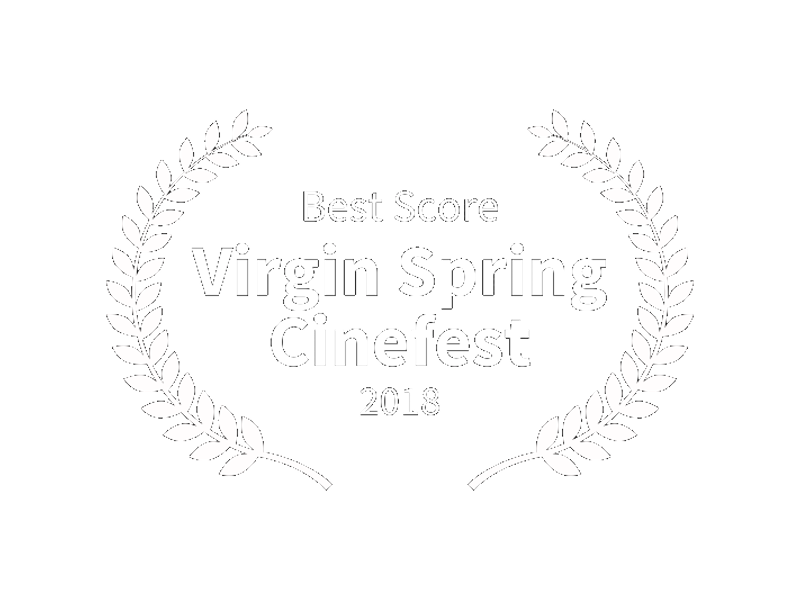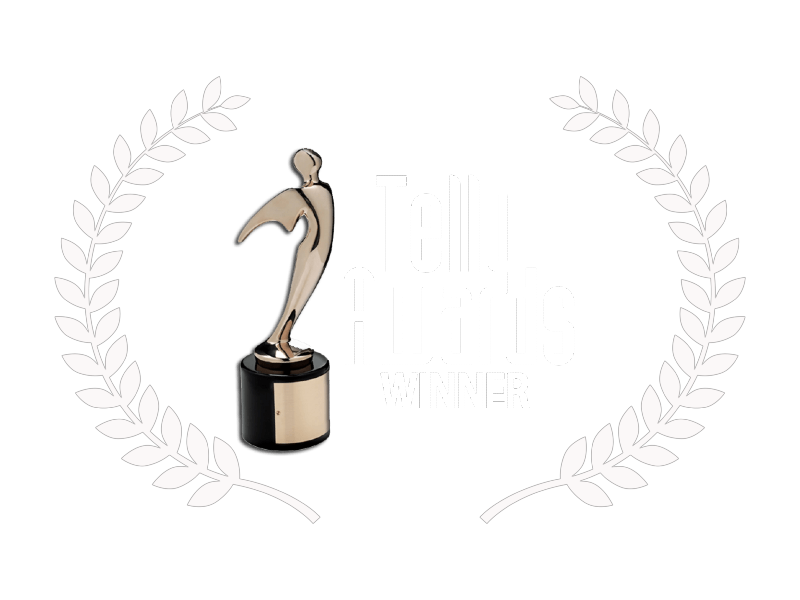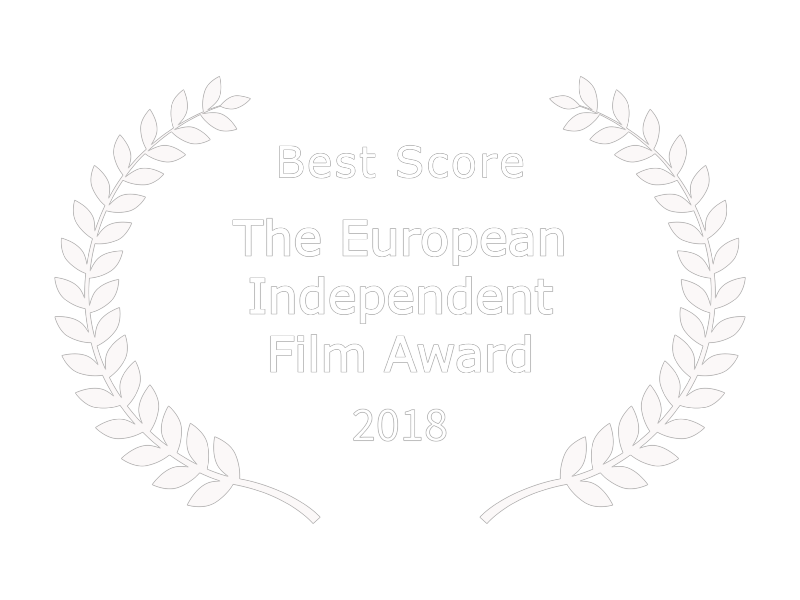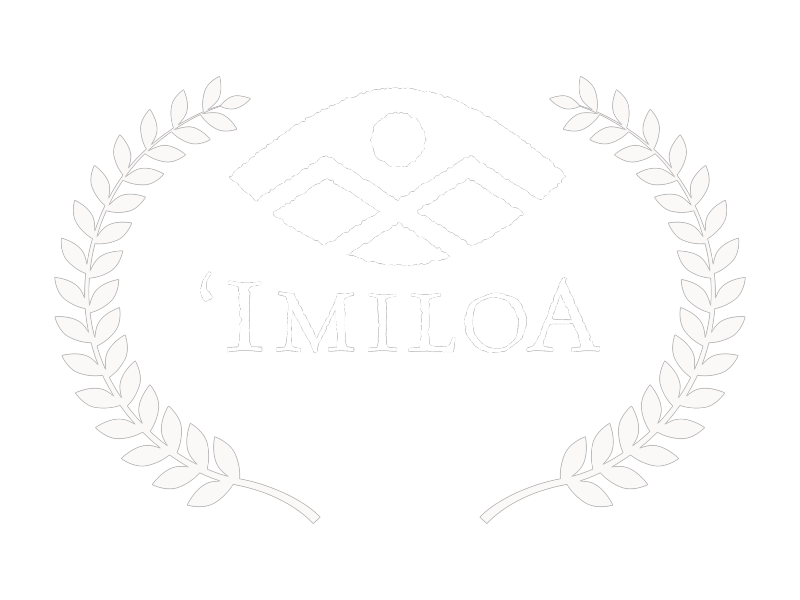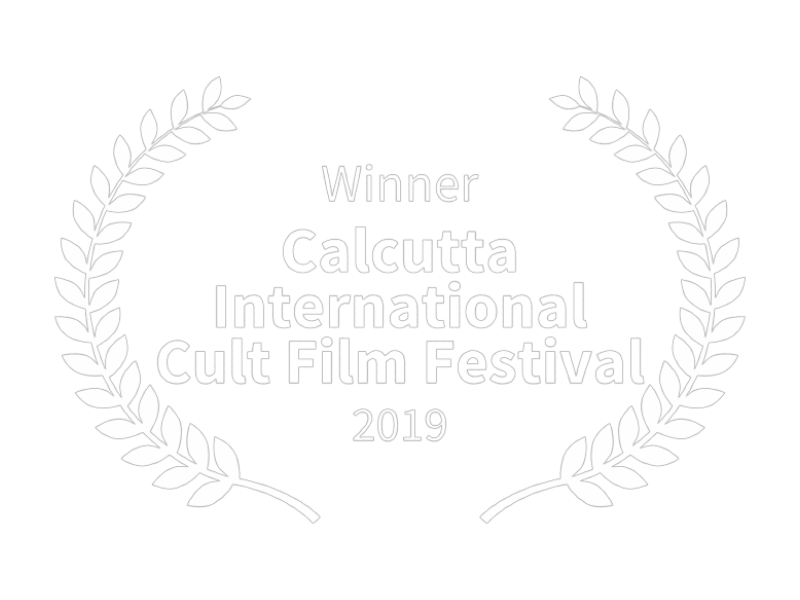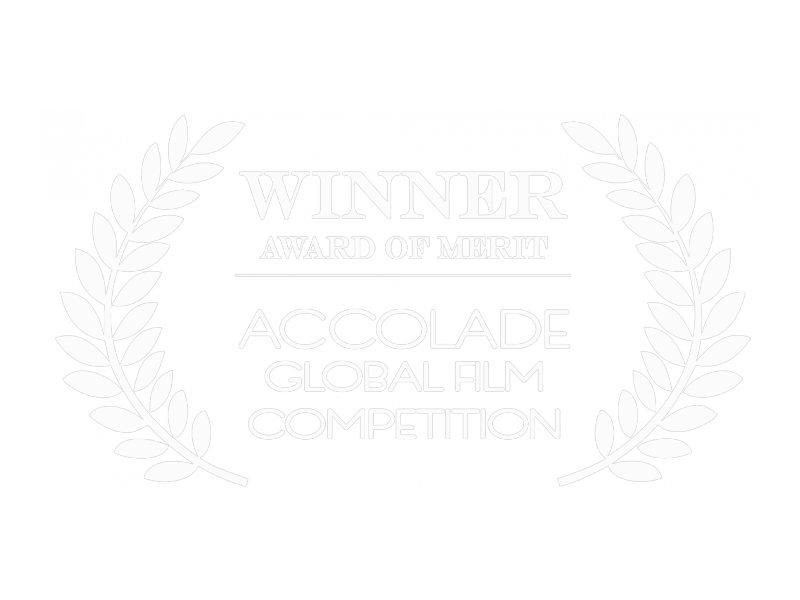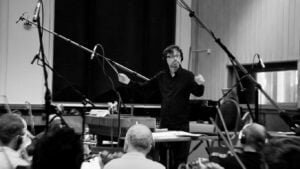
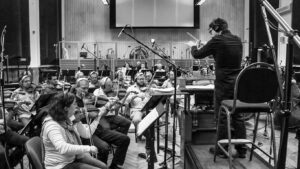


Music and Film: Harmonious Synergy
In summary, here are a few paragraphs on the history of film and its partnership with music. I must credit others for collecting the details. I would suggest you read my Film Scoring page for a more engaging meta analysis of music and homo sapiens.
Music has played a significant role in the world of cinema since its inception. It serves as a powerful tool to enhance the storytelling, evoke emotions, and create a deeper connection with the audience. From the earliest days of cinema, the use of music has become an integral part of the filmmaking process, adding depth, tension, and atmosphere to the visuals on screen. The synergy of music and film cannot be overstated, as it has the ability to elevate a film from good to unforgettable.
Posts on Music and Film
[{"id":2698,"link":"https:\/\/markslater.net\/action-thriller-music-movie-scoring-tips-and-advice\/","name":"action-thriller-music-movie-scoring-tips-and-advice","thumbnail":{"url":"https:\/\/markslater.net\/wp-content\/uploads\/2024\/01\/4AB325A8-4BA5-4DF7-A0AB-6E57488056C9-e1705689147575.jpeg","alt":"Angel Has Fallen Action Thriller Genre"},"title":"Action Thriller Movie Scoring: Expert Tips How to Engage the Audience","postMeta":[],"author":{"name":"Mark Slater","link":"https:\/\/markslater.net\/author\/composermark\/"},"date":"Jan 20, 2024","dateGMT":"2024-01-19 17:29:19","modifiedDate":"2024-02-15 11:06:14","modifiedDateGMT":"2024-02-15 02:06:14","commentCount":"0","commentStatus":"open","categories":{"coma":"<a href=\"https:\/\/markslater.net\/arts\/music\/\" rel=\"category tag\">Music<\/a>, <a href=\"https:\/\/markslater.net\/arts\/composing\/\" rel=\"category tag\">Composing<\/a>, <a href=\"https:\/\/markslater.net\/arts\/filmmaking\/\" rel=\"category tag\">Filmmaking<\/a>","space":"<a href=\"https:\/\/markslater.net\/arts\/music\/\" rel=\"category tag\">Music<\/a> <a href=\"https:\/\/markslater.net\/arts\/composing\/\" rel=\"category tag\">Composing<\/a> <a href=\"https:\/\/markslater.net\/arts\/filmmaking\/\" rel=\"category tag\">Filmmaking<\/a>"},"taxonomies":{"post_tag":"<a href='https:\/\/markslater.net\/tag\/film-music\/' rel='post_tag'>film music<\/a><a href='https:\/\/markslater.net\/tag\/filmmaking\/' rel='post_tag'>filmmaking<\/a><a href='https:\/\/markslater.net\/tag\/music-composition\/' rel='post_tag'>music composition<\/a>"},"readTime":{"min":7,"sec":27},"status":"publish","excerpt":"Action thriller films, with mid-range budgets, have long established themselves as a\u00a0favorite genre in the global film industry."},{"id":2353,"link":"https:\/\/markslater.net\/flatland-the-film-ehlinger-animation\/","name":"flatland-the-film-ehlinger-animation","thumbnail":{"url":"https:\/\/markslater.net\/wp-content\/uploads\/2022\/12\/Flatland-1-1.jpg","alt":"Flatland: The Film"},"title":"Diving into Flatland: Ladd Ehlinger Jr's Unique Animated Film","postMeta":[],"author":{"name":"Mark Slater","link":"https:\/\/markslater.net\/author\/composermark\/"},"date":"Jan 9, 2024","dateGMT":"2024-01-09 05:15:11","modifiedDate":"2025-09-23 20:44:53","modifiedDateGMT":"2025-09-23 11:44:53","commentCount":"0","commentStatus":"open","categories":{"coma":"<a href=\"https:\/\/markslater.net\/arts\/filmmaking\/\" rel=\"category tag\">Filmmaking<\/a>, <a href=\"https:\/\/markslater.net\/film-scoring-projects\/\" rel=\"category tag\">Film Scoring Projects<\/a>, <a href=\"https:\/\/markslater.net\/science\/\" rel=\"category tag\">Science<\/a>, <a href=\"https:\/\/markslater.net\/social-science\/\" rel=\"category tag\">Social Science<\/a>","space":"<a href=\"https:\/\/markslater.net\/arts\/filmmaking\/\" rel=\"category tag\">Filmmaking<\/a> <a href=\"https:\/\/markslater.net\/film-scoring-projects\/\" rel=\"category tag\">Film Scoring Projects<\/a> <a href=\"https:\/\/markslater.net\/science\/\" rel=\"category tag\">Science<\/a> <a href=\"https:\/\/markslater.net\/social-science\/\" rel=\"category tag\">Social Science<\/a>"},"taxonomies":{"post_tag":"<a href='https:\/\/markslater.net\/tag\/animation\/' rel='post_tag'>animation<\/a><a href='https:\/\/markslater.net\/tag\/film-music\/' rel='post_tag'>film music<\/a><a href='https:\/\/markslater.net\/tag\/music-production\/' rel='post_tag'>music production<\/a>"},"readTime":{"min":5,"sec":42},"status":"publish","excerpt":"Adapted from Edwin Abbott Abbott's satirical novella, Flatland The Film breaks the bounds of conventional animation with a score by Mark Slater."},{"id":2203,"link":"https:\/\/markslater.net\/sonic-rebellion-music-depicting-class-conflict\/","name":"sonic-rebellion-music-depicting-class-conflict","thumbnail":{"url":"https:\/\/markslater.net\/wp-content\/uploads\/2024\/01\/potemkin.jpg","alt":"Battleship Potemkin"},"title":"The Role of Music in Depicting Class Conflict in Film","postMeta":[],"author":{"name":"Mark Slater","link":"https:\/\/markslater.net\/author\/composermark\/"},"date":"Jan 6, 2024","dateGMT":"2024-01-06 13:23:58","modifiedDate":"2024-01-26 00:42:04","modifiedDateGMT":"2024-01-25 15:42:04","commentCount":"0","commentStatus":"open","categories":{"coma":"<a href=\"https:\/\/markslater.net\/arts\/music\/\" rel=\"category tag\">Music<\/a>, <a href=\"https:\/\/markslater.net\/social-science\/economics\/\" rel=\"category tag\">Economics<\/a>, <a href=\"https:\/\/markslater.net\/film\/\" rel=\"category tag\">Film<\/a>, <a href=\"https:\/\/markslater.net\/arts\/filmmaking\/\" rel=\"category tag\">Filmmaking<\/a>, <a href=\"https:\/\/markslater.net\/humanities\/history\/\" rel=\"category tag\">History<\/a>, <a href=\"https:\/\/markslater.net\/humanities\/philosophy\/\" rel=\"category tag\">Philosophy<\/a>","space":"<a href=\"https:\/\/markslater.net\/arts\/music\/\" rel=\"category tag\">Music<\/a> <a href=\"https:\/\/markslater.net\/social-science\/economics\/\" rel=\"category tag\">Economics<\/a> <a href=\"https:\/\/markslater.net\/film\/\" rel=\"category tag\">Film<\/a> <a href=\"https:\/\/markslater.net\/arts\/filmmaking\/\" rel=\"category tag\">Filmmaking<\/a> <a href=\"https:\/\/markslater.net\/humanities\/history\/\" rel=\"category tag\">History<\/a> <a href=\"https:\/\/markslater.net\/humanities\/philosophy\/\" rel=\"category tag\">Philosophy<\/a>"},"taxonomies":{"post_tag":"<a href='https:\/\/markslater.net\/tag\/class-struggle\/' rel='post_tag'>class struggle<\/a><a href='https:\/\/markslater.net\/tag\/classical-music\/' rel='post_tag'>classical music<\/a><a href='https:\/\/markslater.net\/tag\/film-music\/' rel='post_tag'>film music<\/a><a href='https:\/\/markslater.net\/tag\/music-appreciation\/' rel='post_tag'>music appreciation<\/a><a href='https:\/\/markslater.net\/tag\/philosophy\/' rel='post_tag'>philosophy<\/a>"},"readTime":{"min":4,"sec":58},"status":"publish","excerpt":"Music is a powerful tool to depict class conflict and serves as a proletarian voice in film, echoing the silent struggles of the working class."},{"id":2199,"link":"https:\/\/markslater.net\/evolution-of-film-music\/","name":"evolution-of-film-music","thumbnail":{"url":"https:\/\/markslater.net\/wp-content\/uploads\/2023\/12\/iStock_000000410562Medium.jpg","alt":"Orchestral music score"},"title":"The Evolution of Film Music: Behind the Magic","postMeta":[],"author":{"name":"Mark Slater","link":"https:\/\/markslater.net\/author\/composermark\/"},"date":"Jan 6, 2024","dateGMT":"2024-01-06 12:50:59","modifiedDate":"2024-02-15 12:15:05","modifiedDateGMT":"2024-02-15 03:15:05","commentCount":"0","commentStatus":"open","categories":{"coma":"<a href=\"https:\/\/markslater.net\/arts\/music\/\" rel=\"category tag\">Music<\/a>, <a href=\"https:\/\/markslater.net\/arts\/composing\/\" rel=\"category tag\">Composing<\/a>, <a href=\"https:\/\/markslater.net\/arts\/filmmaking\/\" rel=\"category tag\">Filmmaking<\/a>, <a href=\"https:\/\/markslater.net\/humanities\/history\/\" rel=\"category tag\">History<\/a>","space":"<a href=\"https:\/\/markslater.net\/arts\/music\/\" rel=\"category tag\">Music<\/a> <a href=\"https:\/\/markslater.net\/arts\/composing\/\" rel=\"category tag\">Composing<\/a> <a href=\"https:\/\/markslater.net\/arts\/filmmaking\/\" rel=\"category tag\">Filmmaking<\/a> <a href=\"https:\/\/markslater.net\/humanities\/history\/\" rel=\"category tag\">History<\/a>"},"taxonomies":{"post_tag":"<a href='https:\/\/markslater.net\/tag\/film-music\/' rel='post_tag'>film music<\/a><a href='https:\/\/markslater.net\/tag\/music-composition\/' rel='post_tag'>music composition<\/a><a href='https:\/\/markslater.net\/tag\/music-production\/' rel='post_tag'>music production<\/a><a href='https:\/\/markslater.net\/tag\/orchestra\/' rel='post_tag'>orchestra<\/a>"},"readTime":{"min":10,"sec":46},"status":"publish","excerpt":"If you're a\u00a0cinema fanatic, chances are, you've been swept away by the magic of film scores. Have you ever wondered about the evolution of film music?"},{"id":2100,"link":"https:\/\/markslater.net\/a-brief-guide-to-film-score-composition\/","name":"a-brief-guide-to-film-score-composition","thumbnail":{"url":"https:\/\/markslater.net\/wp-content\/uploads\/2024\/01\/PragueMov0041.jpeg","alt":"Mark Slater conducting Prague Metropolitan Orchestra"},"title":"Master the Process of Film Score Production","postMeta":[],"author":{"name":"Mark Slater","link":"https:\/\/markslater.net\/author\/composermark\/"},"date":"Jan 6, 2024","dateGMT":"2024-01-06 02:59:09","modifiedDate":"2024-01-26 23:55:28","modifiedDateGMT":"2024-01-26 14:55:28","commentCount":"0","commentStatus":"open","categories":{"coma":"<a href=\"https:\/\/markslater.net\/arts\/music\/\" rel=\"category tag\">Music<\/a>, <a href=\"https:\/\/markslater.net\/arts\/composing\/\" rel=\"category tag\">Composing<\/a>, <a href=\"https:\/\/markslater.net\/arts\/filmmaking\/\" rel=\"category tag\">Filmmaking<\/a>","space":"<a href=\"https:\/\/markslater.net\/arts\/music\/\" rel=\"category tag\">Music<\/a> <a href=\"https:\/\/markslater.net\/arts\/composing\/\" rel=\"category tag\">Composing<\/a> <a href=\"https:\/\/markslater.net\/arts\/filmmaking\/\" rel=\"category tag\">Filmmaking<\/a>"},"taxonomies":{"post_tag":"<a href='https:\/\/markslater.net\/tag\/film-music\/' rel='post_tag'>film music<\/a><a href='https:\/\/markslater.net\/tag\/hollywood-film-music\/' rel='post_tag'>Hollywood film music<\/a><a href='https:\/\/markslater.net\/tag\/music-composition\/' rel='post_tag'>music composition<\/a><a href='https:\/\/markslater.net\/tag\/orchestra\/' rel='post_tag'>orchestra<\/a>"},"readTime":{"min":11,"sec":33},"status":"publish","excerpt":"A film score requires a\u00a0deep comprehension of the plot and its emotional arc, and the development of musical motifs for the characters and the narrative."},{"id":2051,"link":"https:\/\/markslater.net\/unlocking-the-power-of-the-lydian-mode\/","name":"unlocking-the-power-of-the-lydian-mode","thumbnail":{"url":"https:\/\/markslater.net\/wp-content\/uploads\/2024\/01\/Hollywood-Los-Angeles-scaled.jpg","alt":"Hollywood, Los Angeles"},"title":"Unlocking the Power of the Lydian Mode: A Guide to the Hollywood Sound","postMeta":[],"author":{"name":"Mark Slater","link":"https:\/\/markslater.net\/author\/composermark\/"},"date":"Jan 5, 2024","dateGMT":"2024-01-05 05:54:26","modifiedDate":"2024-01-26 00:52:24","modifiedDateGMT":"2024-01-25 15:52:24","commentCount":"0","commentStatus":"open","categories":{"coma":"<a href=\"https:\/\/markslater.net\/arts\/music-theory\/\" rel=\"category tag\">Music Theory<\/a>, <a href=\"https:\/\/markslater.net\/arts\/composing\/\" rel=\"category tag\">Composing<\/a>, <a href=\"https:\/\/markslater.net\/arts\/filmmaking\/\" rel=\"category tag\">Filmmaking<\/a>","space":"<a href=\"https:\/\/markslater.net\/arts\/music-theory\/\" rel=\"category tag\">Music Theory<\/a> <a href=\"https:\/\/markslater.net\/arts\/composing\/\" rel=\"category tag\">Composing<\/a> <a href=\"https:\/\/markslater.net\/arts\/filmmaking\/\" rel=\"category tag\">Filmmaking<\/a>"},"taxonomies":{"post_tag":"<a href='https:\/\/markslater.net\/tag\/film-music\/' rel='post_tag'>film music<\/a><a href='https:\/\/markslater.net\/tag\/music-composition\/' rel='post_tag'>music composition<\/a>"},"readTime":{"min":8,"sec":24},"status":"publish","excerpt":"The Lydian mode carries a\u00a0dreamy, otherworldly quality, and a\u00a0disproportionately strong presence in science fiction and fantasy film scores."},{"id":2020,"link":"https:\/\/markslater.net\/minimalism-in-music-and-life\/","name":"minimalism-in-music-and-life","thumbnail":{"url":"https:\/\/markslater.net\/wp-content\/uploads\/2024\/01\/green-leafed-plant-on-clear-glass-vase-filled-with-water-scaled.jpg","alt":"green leafed plant on clear glass vase filled with water"},"title":"Master the Essence of Minimalism in Music and Life","postMeta":[],"author":{"name":"Mark Slater","link":"https:\/\/markslater.net\/author\/composermark\/"},"date":"Jan 4, 2024","dateGMT":"2024-01-04 07:47:30","modifiedDate":"2024-01-24 12:29:12","modifiedDateGMT":"2024-01-24 03:29:12","commentCount":"0","commentStatus":"open","categories":{"coma":"<a href=\"https:\/\/markslater.net\/arts\/music\/\" rel=\"category tag\">Music<\/a>, <a href=\"https:\/\/markslater.net\/arts\/\" rel=\"category tag\">Arts<\/a>, <a href=\"https:\/\/markslater.net\/arts\/filmmaking\/\" rel=\"category tag\">Filmmaking<\/a>, <a href=\"https:\/\/markslater.net\/reflection\/\" rel=\"category tag\">Reflection<\/a>","space":"<a href=\"https:\/\/markslater.net\/arts\/music\/\" rel=\"category tag\">Music<\/a> <a href=\"https:\/\/markslater.net\/arts\/\" rel=\"category tag\">Arts<\/a> <a href=\"https:\/\/markslater.net\/arts\/filmmaking\/\" rel=\"category tag\">Filmmaking<\/a> <a href=\"https:\/\/markslater.net\/reflection\/\" rel=\"category tag\">Reflection<\/a>"},"taxonomies":{"post_tag":"<a href='https:\/\/markslater.net\/tag\/japanese-culture\/' rel='post_tag'>Japanese culture<\/a><a href='https:\/\/markslater.net\/tag\/lifestyle\/' rel='post_tag'>lifestyle<\/a><a href='https:\/\/markslater.net\/tag\/minimalism\/' rel='post_tag'>minimalism<\/a>"},"readTime":{"min":3,"sec":2},"status":"publish","excerpt":"Whether in music or in life, minimalism offers a path to clarity and meaning. By embracing simplicity, we can strip away the unnecessary."},{"id":1639,"link":"https:\/\/markslater.net\/the-art-of-crafting-music-for-vr-documentaries-on-meta-oculus\/","name":"the-art-of-crafting-music-for-vr-documentaries-on-meta-oculus","thumbnail":{"url":"https:\/\/markslater.net\/wp-content\/uploads\/2023\/12\/boy-wearing-black-and-white-VR-headset-scaled.jpg","alt":"boy wearing black and white VR headset"},"title":"The Art of Crafting Music for VR Documentaries on Meta Oculus","postMeta":[],"author":{"name":"Mark Slater","link":"https:\/\/markslater.net\/author\/composermark\/"},"date":"Dec 17, 2023","dateGMT":"2023-12-17 03:37:05","modifiedDate":"2024-01-26 01:10:20","modifiedDateGMT":"2024-01-25 16:10:20","commentCount":"0","commentStatus":"open","categories":{"coma":"<a href=\"https:\/\/markslater.net\/arts\/music\/\" rel=\"category tag\">Music<\/a>, <a href=\"https:\/\/markslater.net\/technology\/audio_engineering\/\" rel=\"category tag\">Audio Engineering<\/a>, <a href=\"https:\/\/markslater.net\/arts\/composing\/\" rel=\"category tag\">Composing<\/a>, <a href=\"https:\/\/markslater.net\/arts\/filmmaking\/\" rel=\"category tag\">Filmmaking<\/a>, <a href=\"https:\/\/markslater.net\/technology\/\" rel=\"category tag\">Technology<\/a>","space":"<a href=\"https:\/\/markslater.net\/arts\/music\/\" rel=\"category tag\">Music<\/a> <a href=\"https:\/\/markslater.net\/technology\/audio_engineering\/\" rel=\"category tag\">Audio Engineering<\/a> <a href=\"https:\/\/markslater.net\/arts\/composing\/\" rel=\"category tag\">Composing<\/a> <a href=\"https:\/\/markslater.net\/arts\/filmmaking\/\" rel=\"category tag\">Filmmaking<\/a> <a href=\"https:\/\/markslater.net\/technology\/\" rel=\"category tag\">Technology<\/a>"},"taxonomies":{"post_tag":"<a href='https:\/\/markslater.net\/tag\/documentary-film\/' rel='post_tag'>documentary film<\/a><a href='https:\/\/markslater.net\/tag\/music-composition\/' rel='post_tag'>music composition<\/a><a href='https:\/\/markslater.net\/tag\/virtual-reality\/' rel='post_tag'>Virtual Reality<\/a>"},"readTime":{"min":1,"sec":53},"status":"publish","excerpt":""},{"id":2321,"link":"https:\/\/markslater.net\/tokyo-origami-vr-series\/","name":"tokyo-origami-vr-series","thumbnail":{"url":"https:\/\/markslater.net\/wp-content\/uploads\/2021\/08\/TokyoOrigami_Article_Thumbnail.jpg","alt":"Tokyo Origami VR Series on Oculus Quest"},"title":"Tokyo Origami: Unfolding Japan's Wonders in VR","postMeta":[],"author":{"name":"Mark Slater","link":"https:\/\/markslater.net\/author\/composermark\/"},"date":"Oct 7, 2023","dateGMT":"2023-10-06 15:07:00","modifiedDate":"2024-02-01 12:48:24","modifiedDateGMT":"2024-02-01 03:48:24","commentCount":"1","commentStatus":"open","categories":{"coma":"<a href=\"https:\/\/markslater.net\/arts\/filmmaking\/\" rel=\"category tag\">Filmmaking<\/a>, <a href=\"https:\/\/markslater.net\/film-scoring-projects\/\" rel=\"category tag\">Film Scoring Projects<\/a>, <a href=\"https:\/\/markslater.net\/news\/\" rel=\"category tag\">News<\/a>, <a href=\"https:\/\/markslater.net\/technology\/\" rel=\"category tag\">Technology<\/a>","space":"<a href=\"https:\/\/markslater.net\/arts\/filmmaking\/\" rel=\"category tag\">Filmmaking<\/a> <a href=\"https:\/\/markslater.net\/film-scoring-projects\/\" rel=\"category tag\">Film Scoring Projects<\/a> <a href=\"https:\/\/markslater.net\/news\/\" rel=\"category tag\">News<\/a> <a href=\"https:\/\/markslater.net\/technology\/\" rel=\"category tag\">Technology<\/a>"},"taxonomies":{"post_tag":"<a href='https:\/\/markslater.net\/tag\/awards\/' rel='post_tag'>awards<\/a><a href='https:\/\/markslater.net\/tag\/film-music\/' rel='post_tag'>film music<\/a><a href='https:\/\/markslater.net\/tag\/music-composition\/' rel='post_tag'>music composition<\/a><a href='https:\/\/markslater.net\/tag\/virtual-reality\/' rel='post_tag'>Virtual Reality<\/a>"},"readTime":{"min":4,"sec":31},"status":"publish","excerpt":"Award-winning Tokyo Origami, a VR series consisting of 8 episodes, offers a unique and rich insight into life in this intriguing city and beyond.\u00a0"},{"id":1502,"link":"https:\/\/markslater.net\/a-career-in-film-music-composition\/","name":"a-career-in-film-music-composition","thumbnail":{"url":"https:\/\/markslater.net\/wp-content\/uploads\/2022\/12\/405F1EAE-E49C-4D88-A5F6-A8F516337EA0-e1704478019687.jpeg","alt":"Mark Slater Recent Film Projects"},"title":"Scoring Success: A Guide to Starting a Career in Film Music Composition","postMeta":[],"author":{"name":"Mark Slater","link":"https:\/\/markslater.net\/author\/composermark\/"},"date":"Dec 24, 2022","dateGMT":"2022-12-23 15:53:59","modifiedDate":"2025-08-31 01:01:48","modifiedDateGMT":"2025-08-30 16:01:48","commentCount":"1","commentStatus":"open","categories":{"coma":"<a href=\"https:\/\/markslater.net\/arts\/music\/\" rel=\"category tag\">Music<\/a>, <a href=\"https:\/\/markslater.net\/technology\/audio_engineering\/\" rel=\"category tag\">Audio Engineering<\/a>, <a href=\"https:\/\/markslater.net\/arts\/composing\/\" rel=\"category tag\">Composing<\/a>, <a href=\"https:\/\/markslater.net\/social-science\/education\/\" rel=\"category tag\">Education<\/a>, <a href=\"https:\/\/markslater.net\/arts\/filmmaking\/\" rel=\"category tag\">Filmmaking<\/a>, <a href=\"https:\/\/markslater.net\/reflection\/\" rel=\"category tag\">Reflection<\/a>","space":"<a href=\"https:\/\/markslater.net\/arts\/music\/\" rel=\"category tag\">Music<\/a> <a href=\"https:\/\/markslater.net\/technology\/audio_engineering\/\" rel=\"category tag\">Audio Engineering<\/a> <a href=\"https:\/\/markslater.net\/arts\/composing\/\" rel=\"category tag\">Composing<\/a> <a href=\"https:\/\/markslater.net\/social-science\/education\/\" rel=\"category tag\">Education<\/a> <a href=\"https:\/\/markslater.net\/arts\/filmmaking\/\" rel=\"category tag\">Filmmaking<\/a> <a href=\"https:\/\/markslater.net\/reflection\/\" rel=\"category tag\">Reflection<\/a>"},"taxonomies":{"post_tag":"<a href='https:\/\/markslater.net\/tag\/abbey-road\/' rel='post_tag'>Abbey Road<\/a><a href='https:\/\/markslater.net\/tag\/audio-engineering\/' rel='post_tag'>audio engineering<\/a><a href='https:\/\/markslater.net\/tag\/music\/' rel='post_tag'>music<\/a><a href='https:\/\/markslater.net\/tag\/music-composition\/' rel='post_tag'>music composition<\/a><a href='https:\/\/markslater.net\/tag\/music-production\/' rel='post_tag'>music production<\/a>"},"readTime":{"min":10,"sec":12},"status":"publish","excerpt":"Building a\u00a0career in film music isn't just about composing the perfect score, but navigating a\u00a0path that intertwines creativity with commercial viability."},{"id":1222,"link":"https:\/\/markslater.net\/mars-1001-one-thousand-one\/","name":"mars-1001-one-thousand-one","thumbnail":{"url":"https:\/\/markslater.net\/wp-content\/uploads\/2021\/11\/mars1001.jpg","alt":"Mars 1001 Rover"},"title":"Exploring Mars 1001: The Technological Marvel in Fulldome","postMeta":[],"author":{"name":"Mark Slater","link":"https:\/\/markslater.net\/author\/composermark\/"},"date":"Nov 23, 2022","dateGMT":"2022-11-23 11:21:00","modifiedDate":"2024-02-01 13:56:23","modifiedDateGMT":"2024-02-01 04:56:23","commentCount":"0","commentStatus":"closed","categories":{"coma":"<a href=\"https:\/\/markslater.net\/arts\/music\/\" rel=\"category tag\">Music<\/a>, <a href=\"https:\/\/markslater.net\/film-scoring-projects\/\" rel=\"category tag\">Film Scoring Projects<\/a>, <a href=\"https:\/\/markslater.net\/arts\/filmmaking\/\" rel=\"category tag\">Filmmaking<\/a>, <a href=\"https:\/\/markslater.net\/news\/\" rel=\"category tag\">News<\/a>","space":"<a href=\"https:\/\/markslater.net\/arts\/music\/\" rel=\"category tag\">Music<\/a> <a href=\"https:\/\/markslater.net\/film-scoring-projects\/\" rel=\"category tag\">Film Scoring Projects<\/a> <a href=\"https:\/\/markslater.net\/arts\/filmmaking\/\" rel=\"category tag\">Filmmaking<\/a> <a href=\"https:\/\/markslater.net\/news\/\" rel=\"category tag\">News<\/a>"},"taxonomies":{"post_tag":"<a href='https:\/\/markslater.net\/tag\/film-music\/' rel='post_tag'>film music<\/a><a href='https:\/\/markslater.net\/tag\/music-composition\/' rel='post_tag'>music composition<\/a><a href='https:\/\/markslater.net\/tag\/orchestra\/' rel='post_tag'>orchestra<\/a><a href='https:\/\/markslater.net\/tag\/planetarium\/' rel='post_tag'>planetarium<\/a>"},"readTime":{"min":2,"sec":18},"status":"publish","excerpt":"Mars 1001 weaves together live-action footage and computer-generated imagery (CGI) lifting the technical sophistication of fulldome cinema to new heights"},{"id":1117,"link":"https:\/\/markslater.net\/swan-cake-short-film\/","name":"swan-cake-short-film","thumbnail":{"url":"https:\/\/markslater.net\/wp-content\/uploads\/2021\/02\/64877498_2655506298111108_6883098572636553216_o.jpg","alt":"Animation Music Production"},"title":"Swan Cake: The Animated Short Film that Dances its Way to Success","postMeta":[],"author":{"name":"Mark Slater","link":"https:\/\/markslater.net\/author\/composermark\/"},"date":"Nov 4, 2022","dateGMT":"2022-11-04 05:26:00","modifiedDate":"2024-01-28 20:17:04","modifiedDateGMT":"2024-01-28 11:17:04","commentCount":"0","commentStatus":"open","categories":{"coma":"<a href=\"https:\/\/markslater.net\/arts\/composing\/\" rel=\"category tag\">Composing<\/a>, <a href=\"https:\/\/markslater.net\/film-scoring-projects\/\" rel=\"category tag\">Film Scoring Projects<\/a>, <a href=\"https:\/\/markslater.net\/arts\/filmmaking\/\" rel=\"category tag\">Filmmaking<\/a>, <a href=\"https:\/\/markslater.net\/news\/\" rel=\"category tag\">News<\/a>","space":"<a href=\"https:\/\/markslater.net\/arts\/composing\/\" rel=\"category tag\">Composing<\/a> <a href=\"https:\/\/markslater.net\/film-scoring-projects\/\" rel=\"category tag\">Film Scoring Projects<\/a> <a href=\"https:\/\/markslater.net\/arts\/filmmaking\/\" rel=\"category tag\">Filmmaking<\/a> <a href=\"https:\/\/markslater.net\/news\/\" rel=\"category tag\">News<\/a>"},"taxonomies":{"post_tag":"<a href='https:\/\/markslater.net\/tag\/animation\/' rel='post_tag'>animation<\/a><a href='https:\/\/markslater.net\/tag\/awards\/' rel='post_tag'>awards<\/a><a href='https:\/\/markslater.net\/tag\/music\/' rel='post_tag'>music<\/a><a href='https:\/\/markslater.net\/tag\/music-composition\/' rel='post_tag'>music composition<\/a>"},"readTime":{"min":3,"sec":31},"status":"publish","excerpt":"A chubby Parisienne patisserie chef dreams of becoming a ballerina, inspired by the desire to pursue one's dreams, no matter how outlandish they may seem."}] How are music and film connected?
The very first films were silent, in that the sound recording capabilities within the film itself were not yet developed and wouldn’t be until the 1930s. In the early days of film, only moving pictures could be recorded – not the sound that went along with them. Although the film was silent, phonographs and other prototype speakers were used to accompany films. Sound recording technology was first developed by Thomas Edison in 1877.
Musicians were also used to provide live music during a movie screening. Musical accompaniments for silent films varied. Often the accompaniment consisted of arrangements of established music; sometimes special music was specifically composed for a picture. Basically four different kinds of accompaniments developed for the silents.
- Improvisations performed by a pianist or organist. Even the most modest film house usually had a keyboard musician. The player with eyes fixed on the screen followed the succession of images and varied the music to fit the mood and tempo of the picture. For the most part, the music consisted of original extemporizations or variations on familiar classical and popular tunes. In cinemas equipped with theater organs, sound effects (whistles, bells, sirens, etc.) were often integrated into the improvisations.
- Pre-arranged musical extracts performed by a keyboard player, chamber ensemble, or orchestra. The various musical extracts were classified according to mood, atmosphere, and dramatic effect. Many selections consisted of classical music with works by Grieg, Schubert, and Weber being especially popular. Motion Picture Moods for Pianists and Organists: A Rapid-Reference Collection of Selected Pieces arranged by Erno Rapee (New York: G. Schirmer, Inc., 1924) was one of the widely-used extract collections. Sometimes extracts were specially composed. Film distributors often provided musical cue sheets of extracts specially assembled for a certain picture. The succession of extracts were timed to the dramatic events of the picture. Audiences were accustomed to hearing the keyboard player shuffling through the cue sheets or hearing the subdued tapping of the conductor’s baton which signaled the change from one extract to another.
- Continuous score of pre-arranged musical extracts usually performed by an orchestra. A more elaborate kind of film music consisted of a continuous score often prepared by the film director working in collaboration with a music director (“fitter”). The scores contained arrangements of classical and popular music. Occasionally, original music was interpolated between the arrangements. One of the famous early continuous scores was assembled by the American director D. W. Griffith in collaboration with Joseph Carl Breil for The Birth of a Nation (1915).
- Continuous original score performed by an orchestra. For special films, a continuous orchestral score of original music might be prepared. Sometimes the scores were by eminent composers: Foolish Wives (USA, 1921), directed by Erich von Stroheim, music by Sigmund Romberg; La Roue (France, 1922), directed by Abel Gance, music by Arthur Honegger; The New Babylon (USSR, 1929), directed by Leonid Trauberg and Grigori Kozintsev, music by Dmitri Shostakovich.
The oldest surviving film is the Roundhay Garden Scene. It was recorded on October 14, 1888, by inventor Louis Le Prince in Roundhay, Leeds, West Riding of Yorkshire, England. The first commercial movie screening happened on December 28, 1895, at the Grande Cafe in Paris. Brothers Louis and Auguste Lumiere developed a film using their invention the Cinematographe which showed scenes of everyday French life, charging admission to see their series of shorts.
The first “talkie,” a film with synchronized recorded music and speech, was The Jazz Singer, a movie about a young Jewish man who defies his devout religious traditions by becoming a jazz singer. The film was released in 1927 and directed by Alan Crosland.
For more about the history of music and film read The Evolution of Film Music: Behind the Magic
The Language of Music and film
The language of music is a powerful force that transcends cultural boundaries and connects people from all walks of life. From the moment we are born, we are exposed to the enchanting melodies and rhythms that surround us, even before we can utter our first words. Music has a unique ability to communicate and evoke emotions, making it a truly universal language.
At its most basic form, film is a succession of still photographs that capture an event in time. Through the lens of a camera we see things differently than with the naked eye. The filmmaker, like the photographer, decides on a point of view for each visual image and by the use of space and lighting evokes a response in the viewer. Through the succession of shots in a film, a narrative thread or story emerges.
Human Development
The fundamental function of the brains of all animals is to encode and integrate information acquired from the environment through sensory inputs, and then generate adaptive behavioral responses. Sensory information is first rapidly encoded as patterns inherent in the inputs, with visual and auditory patterns being most extensively studied in mammals. The large numbers of encoded images and sound patterns can then be recalled and mentally manipulated in ways that enable comparisons of different patterns and, at least in the human brain, the generation of new patterns that convey objects and processes that could possibly exist, or are impossible or implausible. The music and film synergy is uniquely appreciated by human brains.
As our brains develop, we instinctively respond to music through rhythm and movement. Even as infants, we are drawn to the beat of a drum or the melody of a lullaby, tapping our feet or swaying to the sound. This physical connection to music is ingrained in our nature, and it continues to shape our relationship with this art form as we grow older. At the same time, visual pattern recognition and spatial processing are essential to our survival and adaptation to the world.
But music and film is not just a physical experience; it is also deeply intertwined with our emotions and life experiences. A simple melody can transport us back in time, evoking memories and emotions that we may have long forgotten. Whether it’s a joyful celebration or a heart-wrenching ballad, music has the power to touch our souls and resonate with our innermost feelings. Similarly images and films have an obvious power to make us react with love, fear, desire, and disgust.
To analyse music closer, we discover it impacts brain function and human behavior, including by reducing stress, pain, and symptoms of depression, as well as improving cognitive and motor skills, spatial-temporal learning, and neurogenesis, which is the brain’s ability to produce neurons.
Research has shown how people with neurodegenerative diseases such as Alzheimer’s and Parkinson’s respond positively to music. Despite the unresponsiveness often observed in the late stages of these diseases, when patients are exposed to their favorite music through headphones, a remarkable transformation occurs. This phenomenon is evident on MRIs, where multiple regions of the brain become activated.
Ethnographic Diversity
Music is a reflection of the diverse cultures and traditions that exist around the world. Each culture has its own unique musical language, with distinct rhythms, melodies, and instruments. Through music, we can explore and appreciate the rich tapestry of human expression, gaining insights into different ways of life and fostering a sense of unity and understanding.
People respond best to music they grew up listening to, meaning our preferences are formed as emotional memories. Dispositions towards specific genres are influenced to some degree by demographic factors, where education and income have the greatest influence. People who prefer genres such as Western Classical Music are more likely to have higher levels of formal education and annual income and be urban-dwelling. However, this is a weak relationship and no single socio-cultural measure absolutely determines music taste.
In conclusion, the language of music is both universal and ethnographic. It speaks to our innate human nature, connecting us on a physical and emotional level. It also serves as a bridge between cultures, allowing us to appreciate and celebrate our shared humanity. So let us continue to embrace the language of music and let it guide us on a journey of self-discovery and cultural exploration.
About My Mission: About Me
My name is Mark Andrew Slater. I am an artist and educator who utilizes various platforms such as music and film, dance and animation, writing and teaching, to provoke thought about the future of humanity. In my career, I’ve collaborated with renowned artists and musicians, ranging from the prestigious London Symphony Orchestra to the legendary Stevie Wonder. I’ve also worked with disadvantaged, vulnerable, and marginalized groups, and those in chronic pain as a care worker, therapist, and aid volunteer.
An expert is someone who doesn’t want to learn anything new, because then he would no longer be an expert.
Harry S. Truman
Through art and dialogue, I aim to push boundaries and spark conversations that challenge the status quo. I hope my work serves as a catalyst for questioning the established beliefs and systems, encouraging individuals to think critically and envision a better future.
My expertise extends across different artistic mediums and spheres of society, allowing me to create immersive experiences that resonate with audiences worldwide. In my music and film compositions I try to blend various genres and styles, transcending traditional boundaries and creating a unique sonic landscape that captivates listeners.
In addition to music and film, I love theatre and the empty space. I experiment with dance projects for innovative choreography and storytelling abilities. Through captivating movements and expressive gestures, dance explores themes of identity, social justice, and human connection.
My involvement in film and animation has been a joy and a privilege for many years. Many of my projects combined entertainment with education reaching audiences around the globe. By utilizing visual and auditory storytelling techniques, music and film has the potential to address pressing societal issues, challenging viewers to reflect on the world around them and consider alternative perspectives.
Entertainment is necessary for human productivity. I want my work to do all the things art can do for the human soul and spirit. However we also need to think about the way we live. Economic illiteracy is not an option if democracy is to prosper. So, as an educator, I invite individuals to question the “facts” and actively participate in shaping a more inclusive and compassionate future for humanity.
My Latest Posts
[{"id":3947,"link":"https:\/\/markslater.net\/forest-healing-a-blueprint-for-immersive-design\/","name":"forest-healing-a-blueprint-for-immersive-design","thumbnail":{"url":"https:\/\/markslater.net\/wp-content\/uploads\/2025\/09\/Forest-Healing-scaled.jpeg","alt":"Forest Healing: A peaceful clearing in a forest with a pond, green grass, trees in the background"},"title":"Forest Healing - A Blueprint for Immersive Design","postMeta":[],"author":{"name":"Mark Slater","link":"https:\/\/markslater.net\/author\/composermark\/"},"date":"Sep 23, 2025","dateGMT":"2025-09-22 16:06:06","modifiedDate":"2025-09-23 19:06:01","modifiedDateGMT":"2025-09-23 10:06:01","commentCount":"0","commentStatus":"open","categories":{"coma":"<a href=\"https:\/\/markslater.net\/science\/\" rel=\"category tag\">Science<\/a>, <a href=\"https:\/\/markslater.net\/science\/health-wellness\/\" rel=\"category tag\">Health & Wellness<\/a>, <a href=\"https:\/\/markslater.net\/immersive-experiences\/\" rel=\"category tag\">Immersive Experiences<\/a>, <a href=\"https:\/\/markslater.net\/technology\/immersive-tech\/\" rel=\"category tag\">Immersive Tech<\/a>, <a href=\"https:\/\/markslater.net\/science\/nature\/\" rel=\"category tag\">Nature<\/a>, <a href=\"https:\/\/markslater.net\/reflection\/\" rel=\"category tag\">Reflection<\/a>, <a href=\"https:\/\/markslater.net\/technology\/\" rel=\"category tag\">Technology<\/a>","space":"<a href=\"https:\/\/markslater.net\/science\/\" rel=\"category tag\">Science<\/a> <a href=\"https:\/\/markslater.net\/science\/health-wellness\/\" rel=\"category tag\">Health & Wellness<\/a> <a href=\"https:\/\/markslater.net\/immersive-experiences\/\" rel=\"category tag\">Immersive Experiences<\/a> <a href=\"https:\/\/markslater.net\/technology\/immersive-tech\/\" rel=\"category tag\">Immersive Tech<\/a> <a href=\"https:\/\/markslater.net\/science\/nature\/\" rel=\"category tag\">Nature<\/a> <a href=\"https:\/\/markslater.net\/reflection\/\" rel=\"category tag\">Reflection<\/a> <a href=\"https:\/\/markslater.net\/technology\/\" rel=\"category tag\">Technology<\/a>"},"taxonomies":{"post_tag":"<a href='https:\/\/markslater.net\/tag\/immersive\/' rel='post_tag'>immersive<\/a><a href='https:\/\/markslater.net\/tag\/mental-health\/' rel='post_tag'>mental health<\/a>"},"readTime":{"min":7,"sec":38},"status":"publish","excerpt":"Immersing ourselves in a forest triggers a cascade of positive physiological events. By breathing the forest air, soaking up leaf-filtered sunlight, and listening to the omnidirectional soundscape, we initiate a powerful mind-body response."},{"id":3798,"link":"https:\/\/markslater.net\/the-calculated-incompetence-of-king-joyce-a-strategy-with-ancient-roots\/","name":"the-calculated-incompetence-of-king-joyce-a-strategy-with-ancient-roots","thumbnail":{"url":"https:\/\/markslater.net\/wp-content\/uploads\/2025\/07\/17809.jpg.webp","alt":"Book cover for the UK hardback first edition of the Mirror of Her Dreams"},"title":"The Calculated Incompetence of King Joyce: A Strategy with Ancient Roots","postMeta":[],"author":{"name":"Mark Slater","link":"https:\/\/markslater.net\/author\/composermark\/"},"date":"Jul 30, 2025","dateGMT":"2025-07-30 11:27:56","modifiedDate":"2025-07-30 20:35:27","modifiedDateGMT":"2025-07-30 11:35:27","commentCount":"0","commentStatus":"open","categories":{"coma":"<a href=\"https:\/\/markslater.net\/humanities\/literature\/\" rel=\"category tag\">Literature<\/a>, <a href=\"https:\/\/markslater.net\/humanities\/philosophy\/\" rel=\"category tag\">Philosophy<\/a>","space":"<a href=\"https:\/\/markslater.net\/humanities\/literature\/\" rel=\"category tag\">Literature<\/a> <a href=\"https:\/\/markslater.net\/humanities\/philosophy\/\" rel=\"category tag\">Philosophy<\/a>"},"taxonomies":{"post_tag":"<a href='https:\/\/markslater.net\/tag\/philosophy\/' rel='post_tag'>philosophy<\/a>"},"readTime":{"min":3,"sec":21},"status":"publish","excerpt":""},{"id":3796,"link":"https:\/\/markslater.net\/ai-safety-and-future-of-humanity\/","name":"ai-safety-and-future-of-humanity","thumbnail":{"url":"https:\/\/markslater.net\/wp-content\/uploads\/2024\/02\/0EA0E46A-0FAE-44D7-A949-7280A4D11E48.jpeg","alt":""},"title":"AI Safety and Future of Humanity","postMeta":[],"author":{"name":"Mark Slater","link":"https:\/\/markslater.net\/author\/composermark\/"},"date":"Jul 30, 2025","dateGMT":"2025-07-30 10:08:08","modifiedDate":"2025-07-30 21:48:48","modifiedDateGMT":"2025-07-30 12:48:48","commentCount":"0","commentStatus":"open","categories":{"coma":"<a href=\"https:\/\/markslater.net\/technology\/artificial-intelligence\/\" rel=\"category tag\">Artificial Intelligence<\/a>, <a href=\"https:\/\/markslater.net\/humanities\/philosophy\/\" rel=\"category tag\">Philosophy<\/a>, <a href=\"https:\/\/markslater.net\/social-science\/psychology\/\" rel=\"category tag\">Psychology<\/a>","space":"<a href=\"https:\/\/markslater.net\/technology\/artificial-intelligence\/\" rel=\"category tag\">Artificial Intelligence<\/a> <a href=\"https:\/\/markslater.net\/humanities\/philosophy\/\" rel=\"category tag\">Philosophy<\/a> <a href=\"https:\/\/markslater.net\/social-science\/psychology\/\" rel=\"category tag\">Psychology<\/a>"},"taxonomies":{"post_tag":"<a href='https:\/\/markslater.net\/tag\/artificial-intelligence\/' rel='post_tag'>Artificial Intelligence<\/a><a href='https:\/\/markslater.net\/tag\/philosophy\/' rel='post_tag'>philosophy<\/a><a href='https:\/\/markslater.net\/tag\/psychology\/' rel='post_tag'>psychology<\/a>"},"readTime":{"min":22,"sec":17},"status":"publish","excerpt":""},{"id":3559,"link":"https:\/\/markslater.net\/music-and-political-economy\/","name":"music-and-political-economy","thumbnail":{"url":"https:\/\/markslater.net\/wp-content\/uploads\/2024\/01\/upright-bass-2023-11-27-05-19-43-utc-scaled.jpg","alt":""},"title":"Music and Political Economy","postMeta":[],"author":{"name":"Mark Slater","link":"https:\/\/markslater.net\/author\/composermark\/"},"date":"Feb 28, 2024","dateGMT":"2024-02-28 10:57:17","modifiedDate":"2024-03-31 20:15:18","modifiedDateGMT":"2024-03-31 11:15:18","commentCount":"0","commentStatus":"open","categories":{"coma":"<a href=\"https:\/\/markslater.net\/arts\/\" rel=\"category tag\">Arts<\/a>, <a href=\"https:\/\/markslater.net\/social-science\/economics\/\" rel=\"category tag\">Economics<\/a>","space":"<a href=\"https:\/\/markslater.net\/arts\/\" rel=\"category tag\">Arts<\/a> <a href=\"https:\/\/markslater.net\/social-science\/economics\/\" rel=\"category tag\">Economics<\/a>"},"taxonomies":{"post_tag":"<a href='https:\/\/markslater.net\/tag\/economic-systems\/' rel='post_tag'>economic systems<\/a>"},"readTime":{"min":4,"sec":9},"status":"publish","excerpt":""}] Music and Film Scoring Awards
Mark Slater’s work has been recognized at several international festivals and industry panels, including BAFTA, Cannes Lionsgate, Webby Awards, Telly Awards, Hollywood Film Festival, Lucerne International Film Festival, Newport Beach Film Festival, British Animation Film Festival, Virgin Spring Cinefest and many others.

Clients
Mark Slater has provided music for television, theatrical films, immersive media, and giant screen cinema. Among the sponsors are NASA, the National Science Foundation, PBS, Philips Electronics, Hamburg Planetarium, Morehead Planetarium at the University of North Carolina, Evans & Sutherland, Mirage3D, and COSM.
Music and Film Scoring Projects
[{"id":3313,"link":"https:\/\/markslater.net\/through-the-eyes-of-an-otaku-wins-at-brno\/","name":"through-the-eyes-of-an-otaku-wins-at-brno","thumbnail":{"url":"https:\/\/markslater.net\/wp-content\/uploads\/2024\/02\/030728F9-3650-42C2-9822-6011F14C1229.png","alt":""},"title":"\u201cThrough the Eyes of an Otaku\u201d wins at BRNO","postMeta":[],"author":{"name":"Mark Slater","link":"https:\/\/markslater.net\/author\/composermark\/"},"date":"Feb 2, 2024","dateGMT":"2024-02-01 19:27:58","modifiedDate":"2024-02-08 20:02:26","modifiedDateGMT":"2024-02-08 11:02:26","commentCount":"0","commentStatus":"open","categories":{"coma":"<a href=\"https:\/\/markslater.net\/news\/\" rel=\"category tag\">News<\/a>, <a href=\"https:\/\/markslater.net\/film-scoring-projects\/\" rel=\"category tag\">Film Scoring Projects<\/a>","space":"<a href=\"https:\/\/markslater.net\/news\/\" rel=\"category tag\">News<\/a> <a href=\"https:\/\/markslater.net\/film-scoring-projects\/\" rel=\"category tag\">Film Scoring Projects<\/a>"},"taxonomies":{"post_tag":"<a href='https:\/\/markslater.net\/tag\/awards\/' rel='post_tag'>awards<\/a><a href='https:\/\/markslater.net\/tag\/music-composition\/' rel='post_tag'>music composition<\/a><a href='https:\/\/markslater.net\/tag\/planetarium\/' rel='post_tag'>planetarium<\/a><a href='https:\/\/markslater.net\/tag\/virtual-reality\/' rel='post_tag'>Virtual Reality<\/a>"},"readTime":{"min":4,"sec":58},"status":"publish","excerpt":""},{"id":2353,"link":"https:\/\/markslater.net\/flatland-the-film-ehlinger-animation\/","name":"flatland-the-film-ehlinger-animation","thumbnail":{"url":"https:\/\/markslater.net\/wp-content\/uploads\/2022\/12\/Flatland-1-1.jpg","alt":"Flatland: The Film"},"title":"Diving into Flatland: Ladd Ehlinger Jr's Unique Animated Film","postMeta":[],"author":{"name":"Mark Slater","link":"https:\/\/markslater.net\/author\/composermark\/"},"date":"Jan 9, 2024","dateGMT":"2024-01-09 05:15:11","modifiedDate":"2025-09-23 20:44:53","modifiedDateGMT":"2025-09-23 11:44:53","commentCount":"0","commentStatus":"open","categories":{"coma":"<a href=\"https:\/\/markslater.net\/arts\/filmmaking\/\" rel=\"category tag\">Filmmaking<\/a>, <a href=\"https:\/\/markslater.net\/film-scoring-projects\/\" rel=\"category tag\">Film Scoring Projects<\/a>, <a href=\"https:\/\/markslater.net\/science\/\" rel=\"category tag\">Science<\/a>, <a href=\"https:\/\/markslater.net\/social-science\/\" rel=\"category tag\">Social Science<\/a>","space":"<a href=\"https:\/\/markslater.net\/arts\/filmmaking\/\" rel=\"category tag\">Filmmaking<\/a> <a href=\"https:\/\/markslater.net\/film-scoring-projects\/\" rel=\"category tag\">Film Scoring Projects<\/a> <a href=\"https:\/\/markslater.net\/science\/\" rel=\"category tag\">Science<\/a> <a href=\"https:\/\/markslater.net\/social-science\/\" rel=\"category tag\">Social Science<\/a>"},"taxonomies":{"post_tag":"<a href='https:\/\/markslater.net\/tag\/animation\/' rel='post_tag'>animation<\/a><a href='https:\/\/markslater.net\/tag\/film-music\/' rel='post_tag'>film music<\/a><a href='https:\/\/markslater.net\/tag\/music-production\/' rel='post_tag'>music production<\/a>"},"readTime":{"min":5,"sec":42},"status":"publish","excerpt":"Adapted from Edwin Abbott Abbott's satirical novella, Flatland The Film breaks the bounds of conventional animation with a score by Mark Slater."},{"id":2321,"link":"https:\/\/markslater.net\/tokyo-origami-vr-series\/","name":"tokyo-origami-vr-series","thumbnail":{"url":"https:\/\/markslater.net\/wp-content\/uploads\/2021\/08\/TokyoOrigami_Article_Thumbnail.jpg","alt":"Tokyo Origami VR Series on Oculus Quest"},"title":"Tokyo Origami: Unfolding Japan's Wonders in VR","postMeta":[],"author":{"name":"Mark Slater","link":"https:\/\/markslater.net\/author\/composermark\/"},"date":"Oct 7, 2023","dateGMT":"2023-10-06 15:07:00","modifiedDate":"2024-02-01 12:48:24","modifiedDateGMT":"2024-02-01 03:48:24","commentCount":"1","commentStatus":"open","categories":{"coma":"<a href=\"https:\/\/markslater.net\/arts\/filmmaking\/\" rel=\"category tag\">Filmmaking<\/a>, <a href=\"https:\/\/markslater.net\/film-scoring-projects\/\" rel=\"category tag\">Film Scoring Projects<\/a>, <a href=\"https:\/\/markslater.net\/news\/\" rel=\"category tag\">News<\/a>, <a href=\"https:\/\/markslater.net\/technology\/\" rel=\"category tag\">Technology<\/a>","space":"<a href=\"https:\/\/markslater.net\/arts\/filmmaking\/\" rel=\"category tag\">Filmmaking<\/a> <a href=\"https:\/\/markslater.net\/film-scoring-projects\/\" rel=\"category tag\">Film Scoring Projects<\/a> <a href=\"https:\/\/markslater.net\/news\/\" rel=\"category tag\">News<\/a> <a href=\"https:\/\/markslater.net\/technology\/\" rel=\"category tag\">Technology<\/a>"},"taxonomies":{"post_tag":"<a href='https:\/\/markslater.net\/tag\/awards\/' rel='post_tag'>awards<\/a><a href='https:\/\/markslater.net\/tag\/film-music\/' rel='post_tag'>film music<\/a><a href='https:\/\/markslater.net\/tag\/music-composition\/' rel='post_tag'>music composition<\/a><a href='https:\/\/markslater.net\/tag\/virtual-reality\/' rel='post_tag'>Virtual Reality<\/a>"},"readTime":{"min":4,"sec":31},"status":"publish","excerpt":"Award-winning Tokyo Origami, a VR series consisting of 8 episodes, offers a unique and rich insight into life in this intriguing city and beyond.\u00a0"},{"id":2032,"link":"https:\/\/markslater.net\/dinosaurs-at-dusk-a-whirlwind-time-travel-adventure\/","name":"dinosaurs-at-dusk-a-whirlwind-time-travel-adventure","thumbnail":{"url":"https:\/\/markslater.net\/wp-content\/uploads\/2024\/01\/brown-dinosaur-illustration-scaled.jpg","alt":"brown dinosaur illustration"},"title":"Dinosaurs at Dusk: A Whirlwind Time Travel Adventure","postMeta":[],"author":{"name":"Mark Slater","link":"https:\/\/markslater.net\/author\/composermark\/"},"date":"Jan 4, 2023","dateGMT":"2023-01-04 12:51:00","modifiedDate":"2024-02-01 12:48:47","modifiedDateGMT":"2024-02-01 03:48:47","commentCount":"0","commentStatus":"open","categories":{"coma":"<a href=\"https:\/\/markslater.net\/film-scoring-projects\/\" rel=\"category tag\">Film Scoring Projects<\/a>, <a href=\"https:\/\/markslater.net\/news\/\" rel=\"category tag\">News<\/a>, <a href=\"https:\/\/markslater.net\/science\/\" rel=\"category tag\">Science<\/a>","space":"<a href=\"https:\/\/markslater.net\/film-scoring-projects\/\" rel=\"category tag\">Film Scoring Projects<\/a> <a href=\"https:\/\/markslater.net\/news\/\" rel=\"category tag\">News<\/a> <a href=\"https:\/\/markslater.net\/science\/\" rel=\"category tag\">Science<\/a>"},"taxonomies":{"post_tag":"<a href='https:\/\/markslater.net\/tag\/dinosaurs\/' rel='post_tag'>dinosaurs<\/a><a href='https:\/\/markslater.net\/tag\/film-music\/' rel='post_tag'>film music<\/a><a href='https:\/\/markslater.net\/tag\/planetarium\/' rel='post_tag'>planetarium<\/a>"},"readTime":{"min":2,"sec":16},"status":"publish","excerpt":"Dinosaurs at Dusk is an incredible fulldome planetarium film that takes viewers on a thrilling journey back in time to the era of the dinosaurs."},{"id":2024,"link":"https:\/\/markslater.net\/exploring-the-edge-of-darkness\/","name":"exploring-the-edge-of-darkness","thumbnail":{"url":"https:\/\/markslater.net\/wp-content\/uploads\/2024\/01\/gray-spacecraft-taking-off-during-daytime-scaled.jpg","alt":"gray spacecraft taking off during daytime"},"title":"Exploring the Edge of Darkness: A COSM Fulldome Film","postMeta":[],"author":{"name":"Mark Slater","link":"https:\/\/markslater.net\/author\/composermark\/"},"date":"Jan 3, 2023","dateGMT":"2023-01-03 12:31:00","modifiedDate":"2024-02-01 12:49:09","modifiedDateGMT":"2024-02-01 03:49:09","commentCount":"0","commentStatus":"open","categories":{"coma":"<a href=\"https:\/\/markslater.net\/science\/astronomy-science\/\" rel=\"category tag\">Astronomy<\/a>, <a href=\"https:\/\/markslater.net\/film-scoring-projects\/\" rel=\"category tag\">Film Scoring Projects<\/a>, <a href=\"https:\/\/markslater.net\/news\/\" rel=\"category tag\">News<\/a>, <a href=\"https:\/\/markslater.net\/science\/\" rel=\"category tag\">Science<\/a>","space":"<a href=\"https:\/\/markslater.net\/science\/astronomy-science\/\" rel=\"category tag\">Astronomy<\/a> <a href=\"https:\/\/markslater.net\/film-scoring-projects\/\" rel=\"category tag\">Film Scoring Projects<\/a> <a href=\"https:\/\/markslater.net\/news\/\" rel=\"category tag\">News<\/a> <a href=\"https:\/\/markslater.net\/science\/\" rel=\"category tag\">Science<\/a>"},"taxonomies":{"post_tag":"<a href='https:\/\/markslater.net\/tag\/film-music\/' rel='post_tag'>film music<\/a><a href='https:\/\/markslater.net\/tag\/fulldome\/' rel='post_tag'>fulldome<\/a><a href='https:\/\/markslater.net\/tag\/music-composition\/' rel='post_tag'>music composition<\/a>"},"readTime":{"min":2,"sec":56},"status":"publish","excerpt":"\"Edge of Darkness,\" takes us on an extraordinary adventure through the wonders of space. Produced by E&S Digital Theater."},{"id":2009,"link":"https:\/\/markslater.net\/natural-selection-a-journey-with-charles-darwin\/","name":"natural-selection-a-journey-with-charles-darwin","thumbnail":{"url":"https:\/\/markslater.net\/wp-content\/uploads\/2024\/01\/text-letter-scaled.jpg","alt":"text, letter"},"title":"Natural Selection: A Journey with Charles Darwin","postMeta":[],"author":{"name":"Mark Slater","link":"https:\/\/markslater.net\/author\/composermark\/"},"date":"Jan 2, 2023","dateGMT":"2023-01-02 07:12:55","modifiedDate":"2024-02-01 12:49:40","modifiedDateGMT":"2024-02-01 03:49:40","commentCount":"2","commentStatus":"open","categories":{"coma":"<a href=\"https:\/\/markslater.net\/film-scoring-projects\/\" rel=\"category tag\">Film Scoring Projects<\/a>, <a href=\"https:\/\/markslater.net\/news\/\" rel=\"category tag\">News<\/a>, <a href=\"https:\/\/markslater.net\/science\/\" rel=\"category tag\">Science<\/a>","space":"<a href=\"https:\/\/markslater.net\/film-scoring-projects\/\" rel=\"category tag\">Film Scoring Projects<\/a> <a href=\"https:\/\/markslater.net\/news\/\" rel=\"category tag\">News<\/a> <a href=\"https:\/\/markslater.net\/science\/\" rel=\"category tag\">Science<\/a>"},"taxonomies":{"post_tag":"<a href='https:\/\/markslater.net\/tag\/awards\/' rel='post_tag'>awards<\/a><a href='https:\/\/markslater.net\/tag\/documentary-film\/' rel='post_tag'>documentary film<\/a><a href='https:\/\/markslater.net\/tag\/film-music\/' rel='post_tag'>film music<\/a><a href='https:\/\/markslater.net\/tag\/fulldome\/' rel='post_tag'>fulldome<\/a><a href='https:\/\/markslater.net\/tag\/music-composition\/' rel='post_tag'>music composition<\/a>"},"readTime":{"min":2,"sec":42},"status":"publish","excerpt":"Natural Selection is a captivating fulldome film that takes viewers on an immersive journey through the life and discoveries of Charles Darwin."},{"id":1320,"link":"https:\/\/markslater.net\/mark-slater-at-abbey-road\/","name":"mark-slater-at-abbey-road","thumbnail":{"url":"https:\/\/markslater.net\/wp-content\/uploads\/2021\/01\/2011-10-15_14.25.jpeg","alt":"Mark Slater at Abbey Road"},"title":"Recording at Abbey Road with the London Symphony Orchestra","postMeta":[],"author":{"name":"Mark Slater","link":"https:\/\/markslater.net\/author\/composermark\/"},"date":"Dec 8, 2022","dateGMT":"2022-12-08 13:47:18","modifiedDate":"2024-02-16 14:17:38","modifiedDateGMT":"2024-02-16 05:17:38","commentCount":"3","commentStatus":"open","categories":{"coma":"<a href=\"https:\/\/markslater.net\/arts\/composing\/\" rel=\"category tag\">Composing<\/a>, <a href=\"https:\/\/markslater.net\/science\/astronomy-science\/\" rel=\"category tag\">Astronomy<\/a>, <a href=\"https:\/\/markslater.net\/technology\/audio_engineering\/\" rel=\"category tag\">Audio Engineering<\/a>, <a href=\"https:\/\/markslater.net\/film-scoring-projects\/\" rel=\"category tag\">Film Scoring Projects<\/a>, <a href=\"https:\/\/markslater.net\/news\/\" rel=\"category tag\">News<\/a>","space":"<a href=\"https:\/\/markslater.net\/arts\/composing\/\" rel=\"category tag\">Composing<\/a> <a href=\"https:\/\/markslater.net\/science\/astronomy-science\/\" rel=\"category tag\">Astronomy<\/a> <a href=\"https:\/\/markslater.net\/technology\/audio_engineering\/\" rel=\"category tag\">Audio Engineering<\/a> <a href=\"https:\/\/markslater.net\/film-scoring-projects\/\" rel=\"category tag\">Film Scoring Projects<\/a> <a href=\"https:\/\/markslater.net\/news\/\" rel=\"category tag\">News<\/a>"},"taxonomies":{"post_tag":"<a href='https:\/\/markslater.net\/tag\/abbey-road\/' rel='post_tag'>Abbey Road<\/a><a href='https:\/\/markslater.net\/tag\/fulldome\/' rel='post_tag'>fulldome<\/a><a href='https:\/\/markslater.net\/tag\/music-composition\/' rel='post_tag'>music composition<\/a><a href='https:\/\/markslater.net\/tag\/music-production\/' rel='post_tag'>music production<\/a><a href='https:\/\/markslater.net\/tag\/orchestra\/' rel='post_tag'>orchestra<\/a><a href='https:\/\/markslater.net\/tag\/planetarium\/' rel='post_tag'>planetarium<\/a>"},"readTime":{"min":5,"sec":48},"status":"publish","excerpt":"Mark Slater has had the experience of recording at the iconic Abbey Road studios, not once but numerous times with the London Symphony Orchestra."},{"id":1222,"link":"https:\/\/markslater.net\/mars-1001-one-thousand-one\/","name":"mars-1001-one-thousand-one","thumbnail":{"url":"https:\/\/markslater.net\/wp-content\/uploads\/2021\/11\/mars1001.jpg","alt":"Mars 1001 Rover"},"title":"Exploring Mars 1001: The Technological Marvel in Fulldome","postMeta":[],"author":{"name":"Mark Slater","link":"https:\/\/markslater.net\/author\/composermark\/"},"date":"Nov 23, 2022","dateGMT":"2022-11-23 11:21:00","modifiedDate":"2024-02-01 13:56:23","modifiedDateGMT":"2024-02-01 04:56:23","commentCount":"0","commentStatus":"closed","categories":{"coma":"<a href=\"https:\/\/markslater.net\/arts\/music\/\" rel=\"category tag\">Music<\/a>, <a href=\"https:\/\/markslater.net\/film-scoring-projects\/\" rel=\"category tag\">Film Scoring Projects<\/a>, <a href=\"https:\/\/markslater.net\/arts\/filmmaking\/\" rel=\"category tag\">Filmmaking<\/a>, <a href=\"https:\/\/markslater.net\/news\/\" rel=\"category tag\">News<\/a>","space":"<a href=\"https:\/\/markslater.net\/arts\/music\/\" rel=\"category tag\">Music<\/a> <a href=\"https:\/\/markslater.net\/film-scoring-projects\/\" rel=\"category tag\">Film Scoring Projects<\/a> <a href=\"https:\/\/markslater.net\/arts\/filmmaking\/\" rel=\"category tag\">Filmmaking<\/a> <a href=\"https:\/\/markslater.net\/news\/\" rel=\"category tag\">News<\/a>"},"taxonomies":{"post_tag":"<a href='https:\/\/markslater.net\/tag\/film-music\/' rel='post_tag'>film music<\/a><a href='https:\/\/markslater.net\/tag\/music-composition\/' rel='post_tag'>music composition<\/a><a href='https:\/\/markslater.net\/tag\/orchestra\/' rel='post_tag'>orchestra<\/a><a href='https:\/\/markslater.net\/tag\/planetarium\/' rel='post_tag'>planetarium<\/a>"},"readTime":{"min":2,"sec":18},"status":"publish","excerpt":"Mars 1001 weaves together live-action footage and computer-generated imagery (CGI) lifting the technical sophistication of fulldome cinema to new heights"},{"id":1117,"link":"https:\/\/markslater.net\/swan-cake-short-film\/","name":"swan-cake-short-film","thumbnail":{"url":"https:\/\/markslater.net\/wp-content\/uploads\/2021\/02\/64877498_2655506298111108_6883098572636553216_o.jpg","alt":"Animation Music Production"},"title":"Swan Cake: The Animated Short Film that Dances its Way to Success","postMeta":[],"author":{"name":"Mark Slater","link":"https:\/\/markslater.net\/author\/composermark\/"},"date":"Nov 4, 2022","dateGMT":"2022-11-04 05:26:00","modifiedDate":"2024-01-28 20:17:04","modifiedDateGMT":"2024-01-28 11:17:04","commentCount":"0","commentStatus":"open","categories":{"coma":"<a href=\"https:\/\/markslater.net\/arts\/composing\/\" rel=\"category tag\">Composing<\/a>, <a href=\"https:\/\/markslater.net\/film-scoring-projects\/\" rel=\"category tag\">Film Scoring Projects<\/a>, <a href=\"https:\/\/markslater.net\/arts\/filmmaking\/\" rel=\"category tag\">Filmmaking<\/a>, <a href=\"https:\/\/markslater.net\/news\/\" rel=\"category tag\">News<\/a>","space":"<a href=\"https:\/\/markslater.net\/arts\/composing\/\" rel=\"category tag\">Composing<\/a> <a href=\"https:\/\/markslater.net\/film-scoring-projects\/\" rel=\"category tag\">Film Scoring Projects<\/a> <a href=\"https:\/\/markslater.net\/arts\/filmmaking\/\" rel=\"category tag\">Filmmaking<\/a> <a href=\"https:\/\/markslater.net\/news\/\" rel=\"category tag\">News<\/a>"},"taxonomies":{"post_tag":"<a href='https:\/\/markslater.net\/tag\/animation\/' rel='post_tag'>animation<\/a><a href='https:\/\/markslater.net\/tag\/awards\/' rel='post_tag'>awards<\/a><a href='https:\/\/markslater.net\/tag\/music\/' rel='post_tag'>music<\/a><a href='https:\/\/markslater.net\/tag\/music-composition\/' rel='post_tag'>music composition<\/a>"},"readTime":{"min":3,"sec":31},"status":"publish","excerpt":"A chubby Parisienne patisserie chef dreams of becoming a ballerina, inspired by the desire to pursue one's dreams, no matter how outlandish they may seem."},{"id":1120,"link":"https:\/\/markslater.net\/9d-theater-a-stunning-immersive-experience\/","name":"9d-theater-a-stunning-immersive-experience","thumbnail":{"url":"https:\/\/markslater.net\/wp-content\/uploads\/2021\/10\/lungs-tiens-1080-e1633871688112.png","alt":""},"title":"9D Theater: A stunning immersive experience","postMeta":[],"author":{"name":"Mark Slater","link":"https:\/\/markslater.net\/author\/composermark\/"},"date":"Oct 5, 2021","dateGMT":"2021-10-04 15:19:59","modifiedDate":"2024-01-15 13:32:12","modifiedDateGMT":"2024-01-15 04:32:12","commentCount":"0","commentStatus":"open","categories":{"coma":"<a href=\"https:\/\/markslater.net\/arts\/music\/\" rel=\"category tag\">Music<\/a>, <a href=\"https:\/\/markslater.net\/arts\/composing\/\" rel=\"category tag\">Composing<\/a>, <a href=\"https:\/\/markslater.net\/film-scoring-projects\/\" rel=\"category tag\">Film Scoring Projects<\/a>","space":"<a href=\"https:\/\/markslater.net\/arts\/music\/\" rel=\"category tag\">Music<\/a> <a href=\"https:\/\/markslater.net\/arts\/composing\/\" rel=\"category tag\">Composing<\/a> <a href=\"https:\/\/markslater.net\/film-scoring-projects\/\" rel=\"category tag\">Film Scoring Projects<\/a>"},"taxonomies":{"post_tag":"<a href='https:\/\/markslater.net\/tag\/film-music\/' rel='post_tag'>film music<\/a><a href='https:\/\/markslater.net\/tag\/immersive\/' rel='post_tag'>immersive<\/a><a href='https:\/\/markslater.net\/tag\/music\/' rel='post_tag'>music<\/a><a href='https:\/\/markslater.net\/tag\/music-composition\/' rel='post_tag'>music composition<\/a>"},"readTime":{"min":3,"sec":5},"status":"publish","excerpt":"Mark Slater has crafted hybrid cinematic soundtracks for a variety of immersive media experiences, advancing our senses from the realms of Fulldome, VR 360, and leading us into the captivating world of the 9D Theater Experiences.\u00a0"},{"id":2364,"link":"https:\/\/markslater.net\/saved-by-grace\/","name":"saved-by-grace","thumbnail":{"url":"https:\/\/markslater.net\/wp-content\/uploads\/2021\/10\/MV5BZTBhODg1NTktZTRiNC00OTgzLTgwZmMtYTJlYmUwNGJjY2FlXkEyXkFqcGdeQXVyOTAwNTU5MjM@._V1_FMjpg_UX1280_-e1633961280667.jpg","alt":"Saved By Grace (Short 2018) by Brandan Haskell"},"title":"\"Saved By Grace\" (2018): An Award Winning Short Film by Brandan Haskell","postMeta":[],"author":{"name":"Mark Slater","link":"https:\/\/markslater.net\/author\/composermark\/"},"date":"Oct 1, 2021","dateGMT":"2021-10-01 14:21:00","modifiedDate":"2024-01-28 21:16:07","modifiedDateGMT":"2024-01-28 12:16:07","commentCount":"0","commentStatus":"open","categories":{"coma":"<a href=\"https:\/\/markslater.net\/arts\/filmmaking\/\" rel=\"category tag\">Filmmaking<\/a>, <a href=\"https:\/\/markslater.net\/film-scoring-projects\/\" rel=\"category tag\">Film Scoring Projects<\/a>","space":"<a href=\"https:\/\/markslater.net\/arts\/filmmaking\/\" rel=\"category tag\">Filmmaking<\/a> <a href=\"https:\/\/markslater.net\/film-scoring-projects\/\" rel=\"category tag\">Film Scoring Projects<\/a>"},"taxonomies":{"post_tag":"<a href='https:\/\/markslater.net\/tag\/film-music\/' rel='post_tag'>film music<\/a><a href='https:\/\/markslater.net\/tag\/music-production\/' rel='post_tag'>music production<\/a><a href='https:\/\/markslater.net\/tag\/orchestra\/' rel='post_tag'>orchestra<\/a>"},"readTime":{"min":5,"sec":0},"status":"publish","excerpt":"This remarkable film, stamped with the producer's mark of Mattie Moore, is a\u00a0vivid display of storytelling in its most potent form.\u00a0"},{"id":1064,"link":"https:\/\/markslater.net\/seduction-by-light-philips-aurea-campaign\/","name":"seduction-by-light-philips-aurea-campaign","thumbnail":{"url":"https:\/\/markslater.net\/wp-content\/uploads\/2021\/08\/seduction-7.png","alt":""},"title":"Seduction by Light - Philips Aurea Campaign","postMeta":[],"author":{"name":"Mark Slater","link":"https:\/\/markslater.net\/author\/composermark\/"},"date":"Aug 15, 2021","dateGMT":"2021-08-15 03:59:52","modifiedDate":"2024-02-01 12:35:13","modifiedDateGMT":"2024-02-01 03:35:13","commentCount":"2","commentStatus":"closed","categories":{"coma":"<a href=\"https:\/\/markslater.net\/arts\/composing\/\" rel=\"category tag\">Composing<\/a>, <a href=\"https:\/\/markslater.net\/film-scoring-projects\/\" rel=\"category tag\">Film Scoring Projects<\/a>, <a href=\"https:\/\/markslater.net\/news\/\" rel=\"category tag\">News<\/a>","space":"<a href=\"https:\/\/markslater.net\/arts\/composing\/\" rel=\"category tag\">Composing<\/a> <a href=\"https:\/\/markslater.net\/film-scoring-projects\/\" rel=\"category tag\">Film Scoring Projects<\/a> <a href=\"https:\/\/markslater.net\/news\/\" rel=\"category tag\">News<\/a>"},"taxonomies":{"post_tag":"<a href='https:\/\/markslater.net\/tag\/abbey-road\/' rel='post_tag'>Abbey Road<\/a><a href='https:\/\/markslater.net\/tag\/awards\/' rel='post_tag'>awards<\/a><a href='https:\/\/markslater.net\/tag\/immersive\/' rel='post_tag'>immersive<\/a><a href='https:\/\/markslater.net\/tag\/music-composition\/' rel='post_tag'>music composition<\/a><a href='https:\/\/markslater.net\/tag\/music-production\/' rel='post_tag'>music production<\/a><a href='https:\/\/markslater.net\/tag\/orchestra\/' rel='post_tag'>orchestra<\/a>"},"readTime":{"min":4,"sec":35},"status":"publish","excerpt":"The Philips Aurea Campaign, titled 'Seduction by Light', was a unique marketing campaign in 2007 to highlight Ambilight technology."}] 

